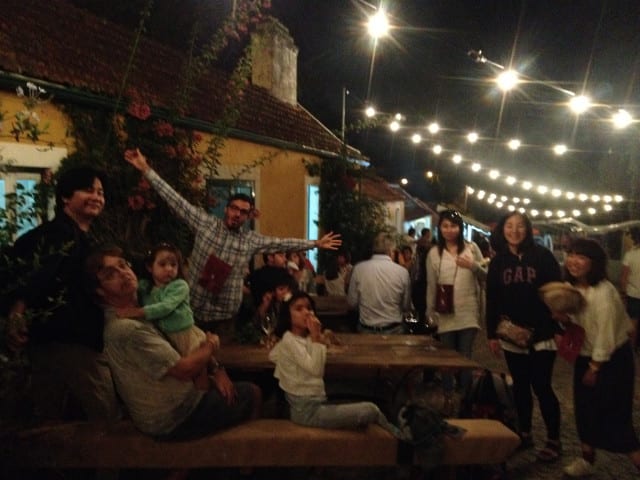
The harvest festival (wine festival) that we go to every year is held at Quinta de Sant'Ana winery. The grounds are incredibly beautiful, and have charmed a long line of winery owners. In the 19th century, King Louis dedicated this land to an actress named Rosa that he had fallen in love with. In the 20th century, a German baron spent a happy life here with his wife and their seven children until a revolution in 1974 forced him to return to Germany. A faithful friend kept watch over the place, however, and thanks to his efforts it was safely passed on to an Englishman named James Frost who married one of the baron’s daughters. Today, the grounds have returned to their former splendor.
My friends and I go there to enjoy the food and wine with folk music playing in the background. At night, we dance around the fire. Quinta de Sant'Ana is so beautiful that you find yourself sighing with delight just to spend time there. For me, it is one of the most precious moments of the year.


Wine has a long history in Portugal, where wine culture stretches back an astounding 2,000-plus years to the ancient Phoenicians. Several hundred years later, during the Age of Navigation in the 15th century, bottles of Portuguese wine that had been sloshing around on a ship for months across the endless seas made their way as far as Japan.
In his History of Japan, the Portuguese missionary Luís Fróis wrote that the first wines in Japan were for use during Mass and as medication for adults, so it was used exclusively for medicinal purposes. Wine gradually caught on in Japan, becoming well known among the shogun as tinta-shu. The word tinta came from the Portuguese phrase vinho tinto, meaning “red wine.” It’s said that tinto refers to the red color, but I’ve also heard that the word was derived from the word quinta, which means “winery.” Because tinta-shu was such an uncommon alcoholic beverage, the Japanese used the Chinese character for “rare” as one of the symbols when writing it.
So what did those shogun think when they were drinking their tinta-shu imported from Europe? The bright red color was completely different from clear Japanese sake, and they most likely heard the missionaries describe it as “the blood of Christ.” Because it was so difficult to obtain, they probably savored it and drank it very slowly—so slowly that it turned sour by the time they finished it. By that point, I’m guessing it was a vinegar drink rather than an alcoholic beverage. Picturing people insisting to each other that the rough stuff “wasn’t that bad” simply because it was such a treasure is a little sad—but it’s also pretty funny to think about.


This year, we joined in the winemaking processes with some local friends. Everyone planned to bring in the grapes they had grown in their own yards, but in the end we decided to use the huge crop of grapes that we harvested from our place.
The first step is to rinse the grape clusters, then pick the individual fruit from the stems and collect them in a bucket. You can do all this while sitting down and chatting, so the adults take care of this part. Next, you gather all the grapes together and have the kids crush them with their feet. We happened to have a baby bath that was just the right size, so we used that. It worked out really well, because we could crush a lot of grapes at once and drain out the juice by releasing the plug in the bottom instead of scooping it out. After that, all we have to do is ferment them and then bottle them about a month later.
Now it’s almost time for the release date of our homemade wine, too!






























































